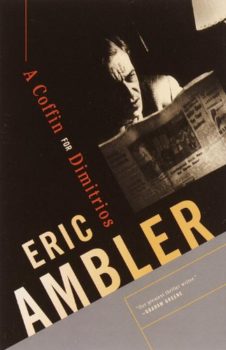
Over the past decade, I’ve read and reviewed more than 150 espionage novels (not counting a great many more I never finished). My 15 favorites—well, make that 16: I couldn’t choose—are listed immediately below. Though my preliminary list included multiple titles by several of the authors included here, I’ve arbitrarily limited myself to a single title from every writer. And I gave every one of these 16 titles a score of ★★★★★ on its review. I’ve listed them in alphabetical order by the authors’ last names.
This post was updated on February 6, 2024.
An abundance of runners-up
Below the list of my 16 favorites, you’ll find reviews of the full list of the best espionage novels I’ve reviewed with ratings of at least ★★★★☆. Those titles, too, are listed in alphabetical order by the authors’ last names. There, you’ll find multiple titles by a number of the authors featured here: Alex Berenson, Charles Cumming, Alan Furst, Mick Herron, Joseph Kanon, John le Carré, Jason Matthews, Stella Rimington, Ross Thomas, Paul Vidich, and Edward Wilson.
As you’ll see below, a great many of the books listed here are in series. And for the most part you’ll find all the novels in each series listed below. There are some exceptions for titles I read before I began reviewing books, others for those I rated below ★★★★☆, and still others that I simply haven’t read yet.
A word of caution: I do not pretend that these 15 books are the best espionage novels ever written—only that they’re the best ones I’ve read and reviewed on this site. There may well be tens of thousands of spy novels in print, and no one—nor even any group of people—could possibly claim to identify the very best among all those stories.
15 (well, actually, 16) top espionage novels reviewed here
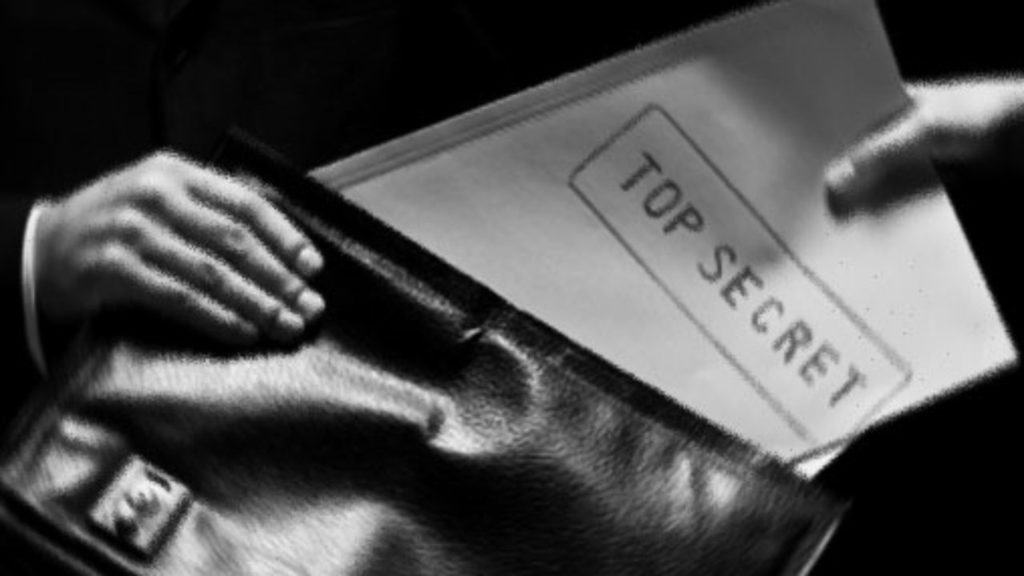
A Coffin for Dimitrios by Eric Ambler (1939) 309 pages ★★★★★ – Still a lively read among classic spy novels
First published in 1939, A Coffin for Dimitrios is widely regarded as one of the best spy novels ever written. That reputation is richly deserved. But it would be a mistake to pigeonhole what may be Eric Ambler’s most accomplished work as merely an espionage novel, as it features few of the familiar devices of that genre—which may be why it’s so highly regarded. However, A Coffin for Dimitrios can be best seen as an historical novel that depicts Europe between the two World Wars, and does so masterfully.
The novel is structured as an account of a wide-ranging investigation into the life and death of a notorious international criminal named Dimitrios Makropoulos. After surviving one of the gruesome massacres of Armenians and Greeks undertaken by Kemal Ataturk, the legendary founder of modern Turkey, Makropoulos is said to have participated in assassination plots in at least two countries, engaged in espionage as a freelance agent, and murdered several men. The unlikely investigator is Charles Latimer, “a lecturer in political economy at a minor English university” who has left behind the academic life and become a successful author of formulaic detective novels. Read the review.
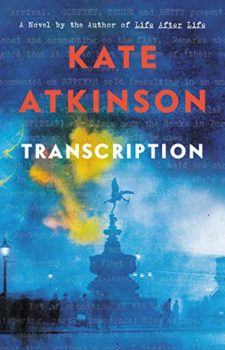
Transcription by Kate Atkinson (2018) 331 pages ★★★★★ – Kate Atkinson’s latest is a beautifully written spy story
Strange. After reading her earlier books, the last thing I would have expected is humor. Yet Kate Atkinson’s latest, Transcription, is surprisingly funny. Well, maybe witty is a better word. This is British humor, after all. Dry humor. The sort of thing most Americans frown through.
Atkinson spins out her tale in sections that shift abruptly through the years, from 1981, back to 1950, then further to 1940, and so forth. Nearly all the action takes place in those three years. The story revolves around Juliet Armstrong. We meet her in 1981 as she nears 60 years of age. But the formative events in the plot occur three and four decades earlier, when Juliet had been recruited as a typist by MI5.
Ten years later, we find her working as a children’s radio producer for the BBC, when her wartime work comes back to haunt her. However, we don’t learn the full story until nearly the end of the book. It you read it, prepare for a shock. Even though Atkinson’s tale appears to be quite pedestrian through much of the book, with only her brilliant use of the language to carry the tale, it’s nothing of the sort. Trust me. This book is a thriller, and a good one. Read the review.
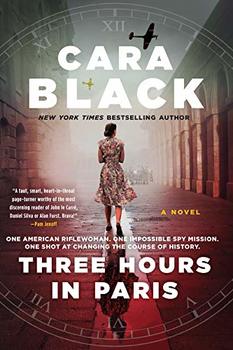
Three Hours in Paris by Cara Black (2020) 361 pages ★★★★★ — A suspenseful World War II espionage thriller set in Paris
England shuddered in terror in the summer of 1940. Following the evacuation of the British Expeditionary Force from Dunkirk in May, Nazi Germany’s U-boat campaign threatened to starve the British people, and an invasion was imminent. Preparations for Operation Sea Lion were underway, revealed by a growing chorus of chatter in German radio communications. In response, a shadowy British intelligence unit known as Section D sent a wave of agents into France on desperate, often suicidal, missions to frustrate Hitler’s plans. San Francisco mystery novelist Cara Black writes convincingly about one of those missions in her heart-pounding new World War II espionage thriller, Three Hours in Paris. The story she tells never happened. But it might’ve.
It’s a high-stakes cat-and-mouse game. The cat is Gunter Hoffman, a brilliant former Munich homicide detective pressed into service in the Reichssicherheitsdienst, a branch of the SS, as a member of the Führer‘s elite protective detail. The mouse is Kate Rees, a young widow, an American rifle champion, dispatched by Section D to Paris to assassinate Adolf Hitler. In Three Hours in Paris, Black lays out the game over the two-day period June 23-24, 1940. The suspense—and the surprises—don’t let up until the very end. Read the review.
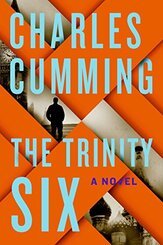
The Trinity Six by Charles Cumming (2011) 421 pages ★★★★★ – A stellar new spy story by Charles Cumming
Much of the latter-day literature of espionage is based, directly or indirectly, on the notorious Cambridge Five—young, bright Cambridge men seduced by the lure of Communism as undergraduates during the tumultuous 1930s who spied for the Soviet Union during World War II. Their defection to the USSR following the war created what was arguably the greatest spy scandal in modern history. For many years thereafter, rumors of a “sixth man” continued to roil the waters of the British Secret Intelligence Service. The Trinity Six relates an ingenious story about that sixth man and his longer and even more consequential career.
The protagonist of this tightly written novel is an English scholar of Soviet and modern Russian history named Sam Gaddis. Heavily in debt and under pressure from his ex-wife for more money to support their daughter, Gaddis finds himself facing what seems the opportunity of a lifetime: a chance to learn the truth about the sixth man and publish a best-seller that will cure his financial troubles once and for all. The problem is, nearly everyone Sam talks to ends up dead — and Sam soon finds himself in desperate flight from their killers. Read the review.
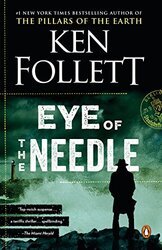
The Eye of the Needle by Ken Follett (1978) 364 pages ★★★★★ – The 40th anniversary edition of Ken Follett’s classic WWII spy novel
British author Ken Follett is best known to a wide public these days for the Kingsbridge Trilogy, his mammoth multi-generational account of an English cathedral town. Together, the three books run to nearly 3,000 pages (and a fourth, a more recent prequel, takes the total to nearly 4,000). They’ve reportedly sold more than 80 million copies around the world. But that’s only half of the 160 million books Follett has sold since the publication of his first novel in 1974. And he has been topping the bestseller lists ever since the publication of his classic WWII spy novel, The Eye of the Needle, in 1978. The book sold 10 million copies, and it frequently appears on lists of the all-time best spy novels. So it’s no surprise that Penguin has brought out a 40th-anniversary edition of the novel. It fully deserves all the attention it gets. Read the review.
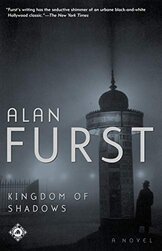
Kingdom of Shadows (Night Soldiers #6) by Alan Furst (2001) 274 pages ★★★★★ – One of the best spy novels of recent years
Welcome to Night Soldiers, the brilliant series by one of our most accomplished writers of espionage novels. Here you’ll meet Nicholas Morath, 44, an aristocratic Hungarian living in Paris, where he is a partner in an advertising firm. His uncle, Count Janos Polanyi, is a senior diplomat in the Hungarian mission to France who is engaged in organizing the resistance to Hitler in Eastern Europe. World War II hasn’t yet started in earnest. Germany’s Anschluss with Austria is still weeks away, and the occupation of the Czech Sudetenland on the distant horizon. But Polanyi sees the future with clarity. He presses his nephew into taking on a dangerous mission in Budapest . . . and the trouble begins.
Morath, known as Nicky to Cara, his young Argentine lover, is one of those world-weary Europeans who surely abounded on the Continent during the fateful years of the 1930s. “He was doomed to live with a certain heaviness of soul, not despair, but the tiresome weight of pushing back against it. It had cost him a wife, long ago, an engagement that never quite led to marriage, and had ended more than one affair since then.” As war approaches, Morath’s already complicated life becomes ever more challenging. His work for his uncle exposes him to grave danger. The stakes grow as the months go by. And the suspense increases apace. Read the review.
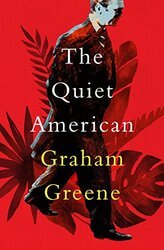
The Quiet American by Graham Greene (1955) 232 pages ★★★★★ — The classic Vietnam novel by Graham Greene
Graham Greene (1904 -91) hovers near the top of any list of the twentieth century’s most readable and insightful spy novelists. He was shortlisted for the Nobel Prize for Literature in 1966 and 1967, confirming his bona fides as an author who roamed far outside the limits of genre. And of his more than two dozen novels, The Quiet American is widely recognized as among the handful that retain their power more than half a century later. In its portrayal of a hopelessly naive CIA officer who blindly follows a warped ideological view of the insurrection against the French in Indochina, this classic Vietnam novel proved prophetic just a decade later, as the United States stumbled headlong into a profoundly misguided war there.
The Quiet American is set in Vietnam during the desperate French effort to remain in control in the face of a nationalist rebellion they didn’t understand. Chaos reigned. Private armies and drug traffickers freely operated during the war between the French and the Vietminh. As Greene describes it, “This was a land of rebellious barons. It was like Europe in the Middle Ages.” But if the French were tone-deaf to realities on the ground, a newly arriving American is even more naive.
Alden Pyle works out of the Economic Aid Mission in the US Embassy, but it soon becomes clear that he is an officer of the (unnamed) CIA. A committed anti-colonialist, Pyle is determined to advance the half-baked “Third Force” theory professed by some scholars and journalists at the time. In all innocence, hoping to supplant both the colonialists and the Communists, he supplies arms to a corrupt warlord named General Thé — with predictably disastrous consequences. Read the review.

An Officer and a Spy by Robert Harris (2020) 361 pages ★★★★★ – The Dreyfus Affair, reenacted in a suspenseful spy novel
The Dreyfus Affair. In the closing years of the nineteenth century and for decades thereafter, that notorious case was seen as indelible a stain on the veneer of European civilization as the Holocaust came to represent a half-century later. A Jewish officer in the French Army was convicted of treason on trumped-up charges and relegated to solitary confinement on the notorious Devil’s Island for several years before a courageous fellow officer uncovered the truth and, with the help of the country’s most famous writer, forced it onto the consciousness of an unhappy nation. Dreyfus was only exonerated and restored to the rank of major in the French Army in 1906, twelve years after his conviction.
Robert Harris has retold the story of the Dreyfus Affair in a brilliantly suspenseful novel based largely on historical facts. An Officer and a Spy reads more like a contemporary novel of espionage than on a reconstruction of real-life events. Read the review.
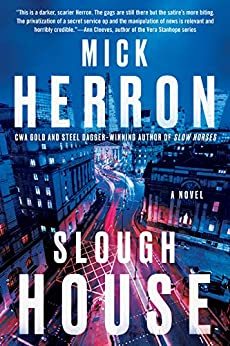
Slough House (Slough House #10) by Mick Herron (2021) 247 pages ★★★★★ — British secret intelligence muddles through a crisis of its own making
Lady Di has painted herself into a corner. Oh, not that Lady Di. This one is Diana Taverner, the newly anointed Director General of Her Majesty’s Secret Service. (Well, she and everyone else refers to the job as First Chair. But we all know what’s going on.) And—acting purely out of patriotic motives, mind you—she has turned to the private sector to fund an off-book mission that her parsimonious handlers in government have proven unwilling to support. These days, British secret intelligence is on the dole. And now the private sector wants its pound of flesh.
Even worse, in that off-book mission, Lady Di dispatched a contract killer to Russia to eliminate one of the GRU‘s most feared assassins. The murderer in question—the Russian, not the mercenary—had herself recently been in England, where she ended the life of one of Lady Di’s agents. So the mission was payback. And it was successful. Unfortunately, now the GRU insists on exacting vengeance for that impertinence. The Russians have sent a team of assassins, which is now in the process of escalating the conflict by murdering former Slough House residents. And threatening the ones who work there now. Read the review.
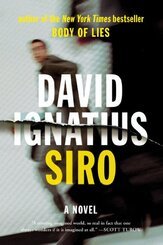
Siro by David Ignatius (1991) 625 pages ★★★★★ – The most intelligent spy novel I’ve read in many years
The 1970s brought little but trouble for the CIA. The legacy of Allen Dulles’ long tenure at the helm of the agency was scandal. One after another, Congressional investigators brought to light the ugly reality of the nation’s most visible intelligence service: Watergate, the bungled operations, the assassinations and attempted assassinations of heads of state, the intervention in domestic affairs. Directors appointed to reform the agency forced out much of the old guard, with the heaviest toll landing on the clandestine Directorate of Operations.
By 1979, the few survivors of the CIA’s early years considered the agency to be dysfunctional. One of those survivors is one of the three central characters in Siro. And the world he confronts is fraught with change on a massive scale.
Nineteen seventy-nine was a watershed year in world affairs. Islamic forces led by the Ayatollah Khomeini overthrew the Shah of Iran and imprisoned 90 hostages in the US embassy in Tehran. Meanwhile, at the White House, President Anwar Sadat of Egypt and Prime Minister Menachem Begin of Israel signed a peace treaty.
At nearly the same time, civil war broke out in El Salvador, and the Sandinista National Liberation Front overthrew the dictatorship of Anastasio Somoza in Nicaragua. Provisional IRA terrorists killed Lord Mountbatten in Ireland. The United States and the People’s Republic of China established full diplomatic relations. And the Soviet Union invaded Afghanistan.
This is the tumultuous historical setting in the background of David Ignatius’ dazzling novel of espionage, Siro. It’s the most intelligent spy novel I’ve read in many years. Read the review.
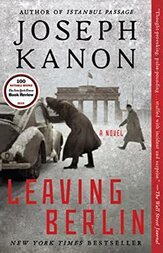
Leaving Berlin by Joseph Kanon (2014) 385 pages ★★★★★ – One of the best of today’s spy novels
Joseph Kanon’s spy novels reek of authenticity. Set in the years immediately following World War II, they conjure up the fear and desperation that hung over Europe in the early days of the Cold War, when it seemed as though open war might well break out between the two emerging superpowers, erstwhile allies. For Leaving Berlin, Kanon has chosen as his setting the bleakest possible time and place: rubble-strewn Berlin in 1949 as the Allied airlift to embattled West Berlin was underway.
For Leaving Berlin, Kanon has chosen as his setting the bleakest possible time and place: rubble-strewn Berlin in 1949 as the Allied airlift to embattled West Berlin was underway. It was before West Germany was created, before the Wall went up, when the border between East and West was still porous and Walter Ulbricht’s East German regime had yet to begin shooting at will at everyone who crossed into the American, British, or French zones. Read the review.
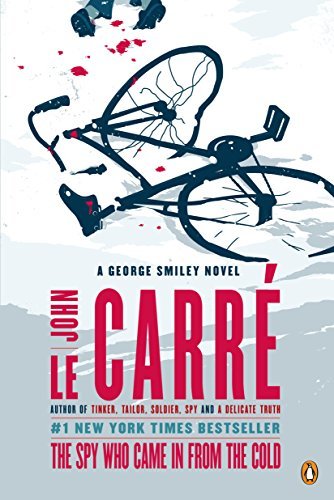
The Spy Who Came In From the Cold by John le Carré (1963) 228 pages ★★★★★ — Is this the best spy novel ever written?
If a general reader can call up the title of only a single espionage novel, it seems likely to be The Spy Who Came In From the Cold. John le Carré’s iconic 1963 story, and the 1965 film on which it was based, have cemented in generations of readers a view of the Cold War spy game as a dirty business fought between ruthless, amoral adversaries who know each other’s names. It’s often thought to be the best spy novel ever written. Many other popular authors in the genre have followed le Carré’s lead, depicting spies who will do just about anything to score a point on the opposition. Whether there’s much truth to this portrayal is uncertain. But it’s what we’re led to believe espionage is all about. Today the reality is different.
Cynicism oozes from the pages of this novel—as much from the author’s acknowledged feelings as expressed in his introduction as from his portrayal of Alec Leamas. As le Carré asks in his introduction, “how far can we go in the rightful defense of our Western values without abandoning them along the way?” In The Spy Who Came In From the Cold he tells us that MI6, and by extension the Western intelligence services, have proven to be as ruthless and amoral as the East German Stasi and the Soviet KGB. Read the review.
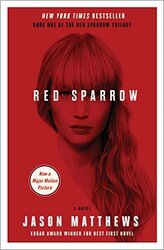
Red Sparrow (Red Sparrow Trilogy #1) by Jason Matthews (2013) 577 pages ★★★★★ – Authentic espionage tradecraft in this gripping novel by a CIA veteran
Red Sparrow is not a conventional spy story. True enough, it’s well-written, ingeniously plotted, and endlessly suspenseful. On that account alone, fans of John le Carré, Joseph Kanon, or Alan Furst should appreciate it. But the book rises above the level of the genre because the author has infused it with detailed, intimate knowledge of authentic espionage tradecraft employed both by the CIA and by Russia’s Foreign Intelligence Service, the SVR. Red Sparrow also reveals a great deal about the SVR’s structure and practices. I was so taken aback by the level of detail that I checked a number of details at random; they all proved accurate. I can easily imagine this novel being passed around at the CIA training center known as the Farm as a fictionalized (if no doubt exaggerated) account of what an officer might encounter in the field. Read the review.
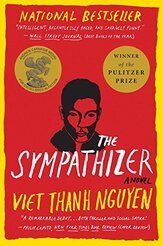
The Sympathizer by Viet Thanh Nguyen (2015) 351 pages ★★★★★ – The Vietnam War through Vietnamese eyes
Viet Thanh Nguyen’s remarkable debut novel, The Sympathizer, has won a slew of literary awards, including the 2016 Pulitzer Prize for Fiction. It was also a finalist for a number of other prestigious awards and has been named a Best Book of the Year on more than twenty lists, including those of the New York Times Book Review, Wall Street Journal, and Washington Post. If there is such a thing as a Great Vietnamese Novel, as there is supposedly a Great American Novel, this book would certainly be a candidate.
The Sympathizer opens in April 1975 as troops of the North Vietnamese army and the National Liberation Front (Viet Cong) are closing in on Saigon. The remnants of the American mission and many thousands of South Vietnamese officials and other collaborators are frantically fighting to claim the few remaining spaces on American airplanes available for the evacuation. In the midst of this chaos we meet the narrator, a captain in the South Vietnamese army.
He introduces himself this way in the opening line of his account: “I am a spy, a sleeper, a spook, a man of two faces.” He is, in fact, the Sympathizer of the title — a secret agent of the NLF actually living in the home of the General who commands the South Vietnamese security police, the Special Branch. He is Eurasian, the son of a French priest and a poor Vietnamese woman, and regularly receives abuse as a result. Read the review.
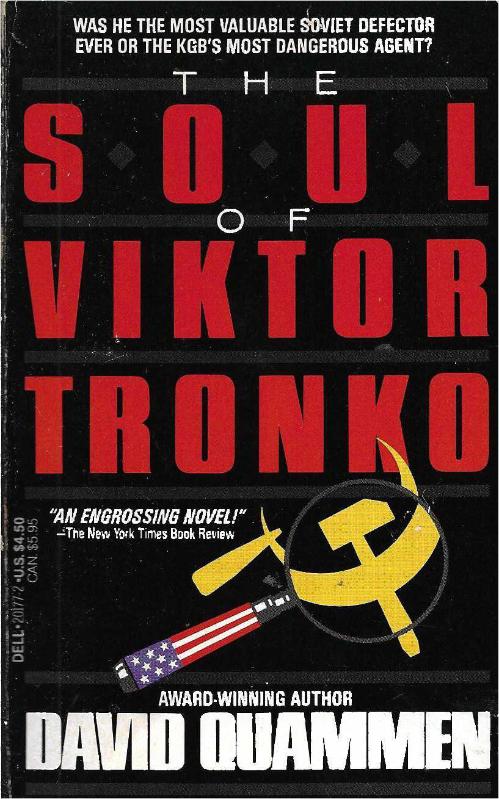
The Soul of Viktor Tronko by David Quammen (1987) 403 pages ★★★★★—Digging down deep to find the mole in the CIA
At the time, few in any inside the Agency would have called him a “mole.” That term didn’t enter wide use until the publication in 1974 of John le Carré’s novel, Tinker Tailor Soldier Spy. But for a decade in the 1960s and 70s, the CIA’s counterintelligence chief, James Jesus Angleton, turned the Agency inside out in a futile search for the highly placed KGB spy he was convinced the Soviet Union had embedded at Langley.
By some accounts, Angleton’s paranoid obsession began in 1963 when his long-time friend Kim Philby defected from the UK to Moscow. And his unrelenting search for the mole in the CIA continued until Director William Colby fired him in December 1974. But the damage had been done by then. Reportedly, Angleton pursued at least forty suspects, damaging their careers and forcing many to leave the Agency—although he never found the fabled mole. That fruitless search is the subject of David Quammen’s endlessly fascinating novel, The Soul of Viktor Tronko. Read the review.
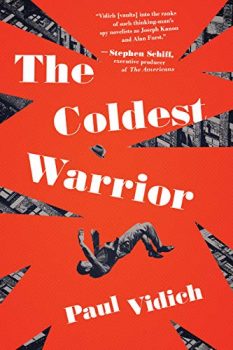
The Coldest Warrior by Paul Vidich (2020) 222 pages ★★★★★ – Project MK-Ultra and the scientist who fell to his death
On November 28, 1953, an American scientist named Frank Olson who had been working on biological weapons for the US Army “fell or jumped” to his death from the thirteenth floor of a New York City hotel. Paul Vidich, the author of four other superb historical spy novels, imagines what might really have happened that day in The Coldest Warrior. The story unfolds twenty-two years later as both the US Senate and the CIA undertake investigations into the Agency’s notorious Project MK-Ultra on “human behavior modification,” which administered LSD to Olson and others without their knowledge or consent.
After an introductory chapter set in 1953 in the hotel where “Dr. Charles Wilson” (Frank Olson) dies, the scene shifts to 1975 at a hearing in the United States Senate exploring that death.
During that period, all the chickens were coming home to roost for the CIA. Its many crimes — assassinating foreign leaders, overthrowing governments, corrupting labor and student groups, and Project MK-Ultra — were coming to light in an orgy of recriminations. Read the review.
All the best espionage novels I’ve reviewed
A Coffin for Dimitrios by Eric Ambler – Still a lively read among classic spy novels
Transcription by Kate Atkinson – A beautifully written spy story
Duet in Beirut by Mishka Ben-David—A failed Mossad operation threatens catastrophe
Alex Berenson’s John Wells series
- The Faithful Spy (John Wells #1) – Al Qaeda from the inside out: a thriller filled with suspense
- The Ghost War (John Wells #2) – North Korea, Afghanistan, China, Iran, all in one superb spy novel
- The Silent Man (John Wells #3) – An able spy story about terrorism, nuclear weapons, and Russia
- The Midnight House (John Wells #4) – The Pentagon and the CIA take a lot of punishment for rendition
- The Secret Soldier (John Wells #5) – Jihadis, the Saudi royal family, and an American soldier-spy
- The Shadow Patrol (John Wells #6) – A suspense-filled thriller about the war in Afghanistan
- The Night Ranger (John Wells #7) – An outstanding thriller set amid the refugee crisis in Kenya and Somalia
- The Counterfeit Agent (John Wells #8) – John Wells takes on a rogue ex-CIA agent
- Twelve Days (John Wells #9) – In a nail-biting thriller, John Wells must stop a US war with Iran
- The Prisoner (John Wells #11) – Going undercover for the CIA in ISIS
- The Deceivers (John Wells #12) – Russia takes the next step in the latest John Wells spy novel
Three Hours in Paris by Cara Black—A suspenseful World War II espionage thriller set in Paris
Yesterday’s Spy by Tom Bradby—A gripping spy novel set amid an Iranian coup
Secret Service (Kate Henderson #1) by Tom Bradby—Is Britain about to elect a Russian spy as its new Prime Minister?
Double Agent (Kate Henderson #2) by Tom Bradby—Upheaval in MI6—and a prime minister who may be a traitor
The Hot Country (Christopher Marlowe Cobb #1) by Robert Olen Butler—American vs German spies in the Mexican Revolution
The Star of Istanbul (Christopher Marlowe Cobb #2) by Robert Olen Butler—An American spy in World War I takes on the German Empire
Death by Disputation (Francis Bacon #2) by Anna Castle—Religious conflict in Elizabethan England fuels this gripping spy story
A Single Spy by William Christie – A Soviet spy in Nazi Germany
Charles Cumming’s suspenseful spy thrillers
- A Spy by Nature – A worthy spy story that foretells more good reading to come
- The Trinity Six – A stellar new spy story by Charles Cumming
- Typhoon – A right-wing Washington cabal seeks to destabilize China
- The Hidden Man – A worthy novel of espionage from a latter-day master of the craft
- A Foreign Country (Thomas Kell #1) – Spies in conflict in contemporary Europe
- A Colder War (Thomas Kell #2) – Spycraft takes center stage in this novel of espionage
- A Divided Spy (Thomas Kell #3) – The latest from a latter-day John le Carre
- The Moroccan Girl – A spy novelist turns to espionage in Charles Cumming’s excellent new novel
- BOX 88 (BOX 88 #1) – A top-secret Anglo American spy agency
The Lazarus Solution by Kjell Ola Dahl—A gripping tale of intrigue in wartime Stockholm
Berlin Game (Bernard Samson #1) by Len Deighton—A classic novel of Cold War espionage reminiscent of John le Carré
Mexico Set (Bernard Samson #2) by Len Deighton—In Len Deighton’s classic spy series, Bernard Samson goes to Mexico
A Spy in the Struggle by Aya de León—From Aya de León, a brilliant thriller that exposes the FBI’s illegal tactics
A Prisoner in Malta (Christopher Marlowe #1) by Phillip DePoy – A delightful historical mystery novel starring Christopher Marlowe
Moscow Sting (Anna Resnikov #2) by Alex Dryden—A former British intelligence officer imagines a female Russian superspy
Exposure by Helen Dunmore – Gay life in Britain in a suspenseful thriller
Murder in the Queen’s Wardrobe (Mistress Jaffrey #1) by Kathy Lynn Emerson—Intrigue and murder in Elizabeth’s court
Winter Work by Dan Fesperman—Intrigue in East Germany after the Wall came down
Espionage thrillers from Joseph Finder
- High Crimes – A taut thriller about Special Forces running amok in El Salvador in 1983
- Extraordinary Powers – A standout among espionage thrillers
- Paranoia – A devilishly clever tale
Ken Follett’s classic novels of espionage
- The Eye of the Needle – The 40th anniversary edition of Ken Follett’s classic WWII spy novel
- The Key to Rebecca by Ken Follett—One of the best World War II spy stories
- Hornet Flight by Ken Follett—The Danish Resistance and a secret Nazi base
The Fox by Frederick Forsyth – A great new spy novel from the author of “The Day of the Jackal”
Devil Makes Three by Ben Fountain—A dramatic tale of a military coup in Haiti
The historical Night Soldiers series by Alan Furst
- Red Gold (Night Soldiers #5) – A brilliant novel of the French Resistance
- Kingdom of Shadows (Night Soldiers #6) – One of the best spy novels of recent years
- Blood of Victory (Night Soldiers #7) – Spies at work in WWII Istanbul and Rumania
- Dark Voyage (Night Soldiers #8) — A gripping spy story set on a ocean freighter in World War II
- The Foreign Correspondent (Night Soldiers #9) – A superb historical espionage novel
- Spies of the Balkans (Night Soldiers #11) – Alan Furst’s superb novel, “Spies of the Balkans”
- Mission to Paris (Night Soldiers #12) – At the dawn of World War II, a Hollywood film star in an espionage novel
- Midnight in Europe (Night Soldiers #13) – Arms merchants and spies in a thriller set during the Spanish Civil War
- A Hero of France (Night Soldiers #14) – Vive la Resistance!
- Under Occupation (Night Soldiers #15) – Alan Furst on the French Resistance
Alex Gerlis’s outstanding wartime spy novels
- The Best of Our Spies (Spies #1) – An extraordinary World War II spy story grounded in historical fact
- The Swiss Spy (Spies #2) – World War II spies in Switzerland
- Vienna Spies (Spies #3) – A stirring tale of spies in wartime Vienna
- The Berlin Spies (Spies #4) – The best spy novelist you’ve never read
- Prince of Spies (Richard Prince #1)—British spies and the Nazi V-2 rocket
- Agent in Berlin (Wolf Pack #1)—A new series about British spies in Nazi Germany
The Ways of the World (James Maxted #1) by Robert Goddard – A superb novel of espionage set in 1919 Paris
The Quiet American by Graham Greene—The classic Vietnam novel by Graham Greene
An Officer and a Spy by Robert Harris – The Dreyfus Affair, reenacted in a suspenseful spy novel
Intelligence: A Tale of Terror and Uncivil Service by Susan Hasler – A satirical take on the dysfunctional CIA under George W Bush
Mick Herron’s clever Slough House novels
- Slow Horses (Slough House #1) – British satire about misfit spies in MI5
- Dead Lions (Slough House #2) – Russian sleeper agents and the misfits of MI5
- The List (Slough House #3) – Bumbling spies again in Mick Herron’s Slough House series
- Real Tigers (Slough House #4) – Slough House spooks are on the loose again
- Spook Street (Slough House #5) – MI5’s Slough House spies uncover a decades-old conspiracy
- London Rules (Slough House #6) – MI5’s misfit spies outdo themselves in this very funny novel
- The Marylebone Drop (Slough House #7) – Mick Herron scores with another entry in the Slough House series
- Joe Country (Slough House #8)—Mick Herron’s latest spy thriller will keep you guessing
- The Catch (Slough House #9)—About that billionaire who committed suicide in prison
- Slough House (Slough House #10)—British secret intelligence muddles through a crisis of its own making
- Bad Actors (Slough House #11)—Mischief and misadventure in abundance at Slough House
- The Secret Hours—A standalone novel from the author of “Slough House”
Classic espionage novels by Jack Higgins
- The Eagle Has Landed – A classic espionage thriller that’s well worth rereading
- Eye of the Storm (Sean Dillon #1) – Reimagining Saddam Hussein’s role in history
- Thunder Point (Sean Dillon #2) – One of Jack Higgins’ best thrillers
- Touch the Devil (Liam Devlin #2) – The IRA, the KGB, MI5, and the Corsican mob all conflict
Clean Hands by Patrick Hoffman—A diabolically clever thriller about corporate espionage
Compelling spy stories by David Ignatius
- The Increment – A gripping novel about Iran and the CIA
- The Bank of Fear – Saddam Hussein, secret offshore banks, and a dissolute Saudi prince
- Siro – The most intelligent spy novel I’ve read in many years
- A Firing Offense – A suspenseful espionage story about journalists and spies
- Agents of Innocence — The CIA and the PLO in Cold War Beirut
- The Paladin—The latest from David Ignatius is a little hard to believe
A Map of Betrayal by Ha Jin – Betrayal is in the eye of the beholder
Joseph Kanon’s superb spy stories
- Leaving Berlin – One of the best of today’s spy novels
- The Prodigal Spy – An espionage novelist to rival John Le Carre
- Defectors – A superb new novel about defectors in Moscow
- Stardust — Intrigue among German emigrés in postwar Hollywood
- The Berlin Exchange — An ingenious tale about a spy swap in East Berlin
Red Widow by Alma Katsu—A poisoned CIA asset, and a hunt for a CIA mole
Red London (Red Widow #2) by Alma Katsu—A joint MI6-CIA operation targets Russian oligarchs in London
Who Is Vera Kelly? by Rosalie Knecht – A puzzling spy story set in Argentina in the time of the generals
John le Carré’s classic novels of espionage
- The Spy Who Came In From the Cold — Is this the best spy novel ever written?
- A Legacy of Spies – The Cold War reexamined in John le Carré’s terrific new novel
- Our Game – John le Carré on British espionage at the end of the Cold War
- Our Kind of Traitor – The spy who never left the cold
- Agent Running in the Field – John le Carré doesn’t like Donald Trump
- Silverview—A nostalgic look at espionage from John le Carré
The Salzburg Connection by Helen MacInnes — Nazis, Communists, and Western spies clash in this classic spy novel
Too Bad to Die by Francine Mathews – Ian Fleming stars in this delightful spy story worthy of James Bond
The brilliant Red Sparrow Trilogy by Jason Matthews
- Red Sparrow (Red Sparrow Trilogy #1) – Authentic espionage tradecraft in this gripping novel by a CIA veteran
- Palace of Treason (Red Sparrow Trilogy #2) – Nonstop action in the sequel to the bestseller Red Sparrow
- The Kremlin’s Candidate (Red Sparrow Trilogy #3) – The gripping conclusion to the Red Sparrow Trilogy
Prague Spring by Simon Mawer – A tale of love and espionage during Prague Spring
The Colonel’s Mistake (Mark Sava #1) by Dan Mayland—A spellbinding Middle Eastern spy story
The Leveling (Mark Sava #2) by Dan Mayland—A compelling tale of intrigue in Central Asia
The Bucharest Dossier by William Maz—A spy thriller set during the tumultuous Romanian Revolution
Damascus Station by David McCloskey—A spellbinding novel about espionage in Syria
Moscow X by David McCloskey—A CIA plot to destabilize the Russian government
An Expensive Education by Nick McDonell—Special Forces are up to no good in Somalia
The Sympathizer by Viet Thanh Nguyen – The Vietnam War through Vietnamese eyes
My Father’s House (Rome Escape Line Trilogy #1) by Joseph O’Connor—The WWII Vatican Escape Line for Jews and Allied POWs
Warlight by Michael Ondaatje—A wartime mystery wrapped in fog
The Strivers’ Row Spy (Renaissance #1) by Jason Overstreet—African-American history comes to life in this engaging spy novel
Secrets of State by Matthew Palmer – A deep state conspiracy to trigger a Pakistani-Indian war
Heresy (Giordano Bruno #1) by S. J. Parris—An historical spy thriller in the Elizabethan Age
Chris Pavone’s engaging espionage novels
- The Expats – A truly suspenseful novel about cyber theft
- The Accident – Rogue spies on the loose
- The Travelers – A clever spy story that will keep you guessing
- The Paris Diversion – The CIA, a crumbling marriage, and terrorist threats in Paris
Brandenburg Gate by Henry Porter—When Communism lost its grip on East Germany
The Secrets We Kept by Lara Prescott—Doctor Zhivago and the women in the CIA typing pool
East of Hounslow (Jay Qasim #1) by Khurrum Rahman—Undercover, a small-time drug dealer becomes an accidental jihadist for MI5
The well-crafted Liz Carlyle novels by Stella Rimington
- At Risk (Liz Carlyle #1) – High stakes in an excellent espionage thriller
- Secret Asset (Liz Carlyle #2) – An engrossing novel about British counter-espionage
- Illegal Action (Liz Carlyle #3) – An engaging spy novel from former MI5 director Stella Rimington
- Dead Line (Liz Carlyle #4) – Liz Carlyle stars in an outstanding British espionage novel
- Present Danger (Liz Carlyle #5)– Do all the best spy novels come from Britain?
- Rip Tide (Liz Carlyle #6) – Somali pirates, Al Qaeda, and home-grown terrorists in England
- The Geneva Trap (Liz Carlyle #7) – Former MI5 Director spins a fascinating tale of espionage
- Close Call (Liz Carlyle #8) – The former MI5 director spins another great tale of espionage
- Breaking Cover (Liz Carlyle #9) – Russian agents under cover in the UK
- The Moscow Sleepers (Liz Carlyle #10) — An interesting new twist on Russian sleeper agents
Provisionally Yours by Antanas Sileika—A fascinating spy story set in Lithuania following World War I
The Cairo Affair by Olen Steinhauer – A complex spy novel worthy of John Le Carre
All the Old Knives by Olen Steinhauer – A terrorist hijacking, the CIA, and two former lovers at dinner
Ross Thomas’s witty spy stories
- The Cold War Swap – Making the Cold War seem like fun
- Cast a Yellow Shadow – A novel about assassination that’s lots of fun
- The Singapore Wink – An engaging novel of crime and espionage set in 1960s Singapore
- Missionary Stew – Cocaine, the CIA, and a Central American revolution
- Out on the Rim – Con men, a $5 million bribe, and a Philippine rebellion
Spymaster (Scot Horvath #18) by Brad Thor—Brad Thor showcases his anti-Russian perspective in this novel
Paul Vidich’s haunting historical spy novels
- An Honorable Man – The Cold War, the early CIA, and the McCarthy Era
- The Good Assassin – A compelling spy novel set during the Cuban Revolution
- The Coldest Warrior – Project MK-Ultra and the scientist who fell to his death
- The Mercenary – A superb Cold War thriller from Paul Vidich
- The Matchmaker: A Spy in Berlin – A dangerous spy game in Berlin before the fall of the Wall
- Beirut Station: Two Lives of a Spy—A compelling spy novel about living a double life
American Spy by Lauren Wilkinson – An African-American spy in the maelstrom of Cold War rivalry in Africa
Our Woman in Moscow by Beatriz Williams—American defectors in Moscow mirror the Cambridge Five
The William Catesby novels by Edward Wilson
- The Envoy (William Catesby #1) – The CIA, the KGB, British intelligence and the H-bomb
- The Whitehall Mandarin (William Catesby #4) – In the early days of the Cold War, nuclear espionage in search of the H-bomb
- A Very British Ending (William Catesby #5) – A harsh look at post-war British intelligence
For related reading
This post is one of My 10 top reading recommendations.
You might also enjoy my posts:
- 20 good nonfiction books about espionage
- 12 great war novels reviewed here
- Top 10 historical mysteries and thrillers
- Top 10 mystery and thriller series
And you can always find all the latest books I’ve read and reviewed on the Home Page.

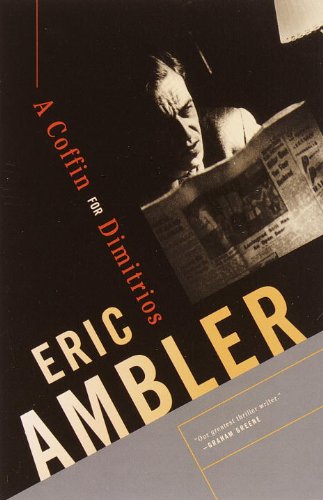
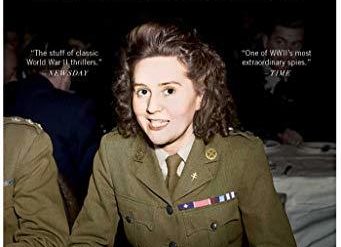

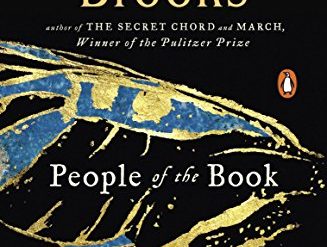























I can’t simply go without leaving a comment. This post is a great read. I hope you can take the time to read my post as well Spy Novels that Changed the World of Mystery Literature
Thanks. I’ve just read your post, and I can see that our taste is very different. Of the five books you cite, I recognize only two as great spy novels, “Baskerville” and “Red Sparrow.” I abhor Agatha Christie, “Silence of the Lambs” is horror not espionage fiction, and the “Da Vinci Code,” though popular and a gripping thriller, is just that, not a spy novel. And it’s not great, because it’s so poorly written. But each to his taste.